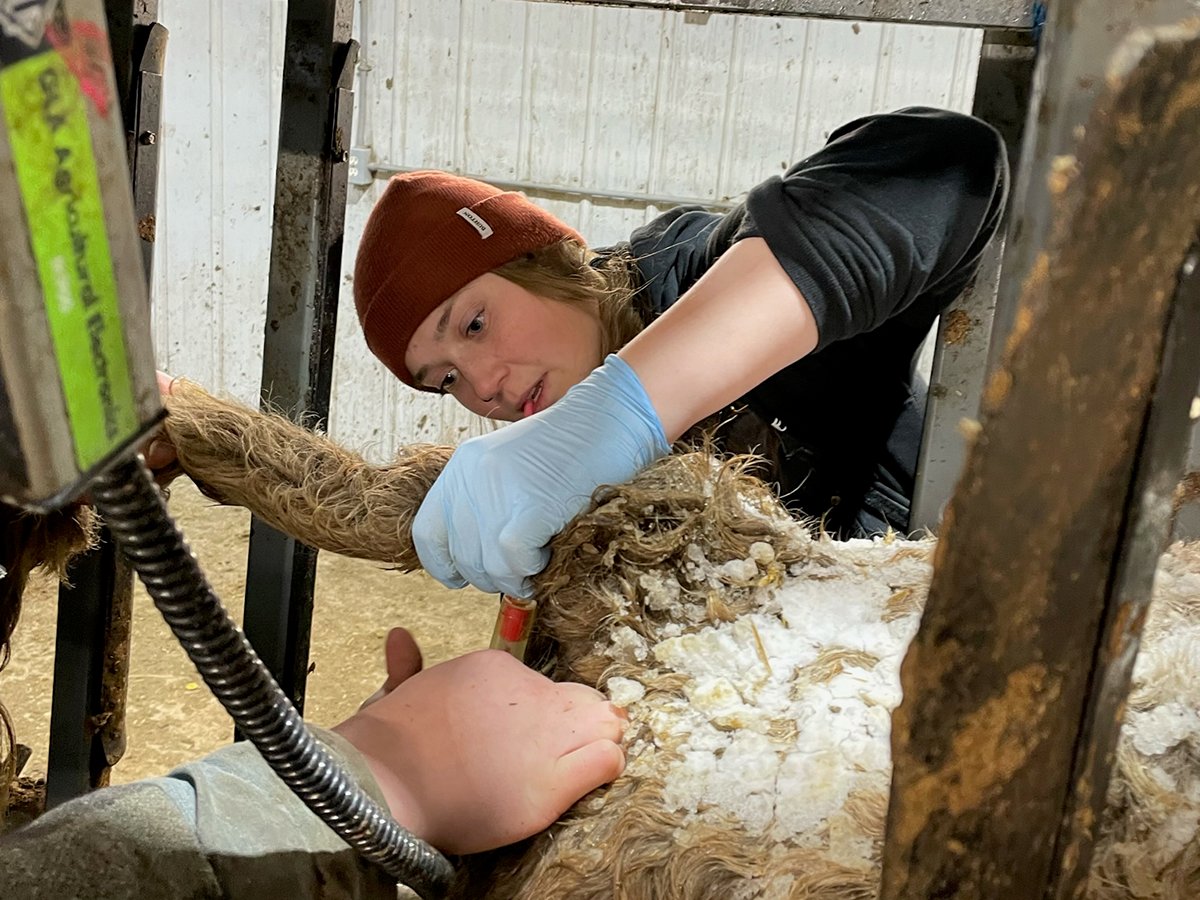Three goat operations in Manitoba and one sheep operation in Saskatchewan have been confirmed with scrapie in their flocks this year as efforts continue toward eradicating the disease in Canada.
Scrapie is a federally reportable disease in sheep and goats that is in the same general family as other prion-related diseases such as bovine spongiform encephalop-athy and chronic wasting disease.
The Canadian Food Inspection Agency does not reveal the identities or exact locations of farms that have scrapie cases.
However, Corlena Patterson, executive director of the Canadian Sheep Federation, said she has spoken with some of those affected and knows the discovery and control measures have a major impact.
Read Also

Pen riders better than tech at detecting respiratory disease in feedlot cattle, says researcher
Katrina Garneau’s recent research found that pen riders are better than technology at flagging signs of BRD in feedlot cattle.
As with any reportable disease, the CFIA undertakes control measures involving quarantine and killing infected animals and herd or flock mates.
“Those affected by it are hugely affected by it. It’s devastating, most frequently,” she said.
“If a farm has been shown to be scrapie positive, everybody who’s sold to them in the past five years and everybody who’s bought from them in the past five years is going to fall under some level of disease control action. It’s important to know that there are a lot more than one animal involved when you see one farm being part of an investigation.”
Scrapie Canada launched the Scrapie Eradication Strategic Plan Delivery Project last year with the goal of eradicating the disease.
Its thrusts include establishing a national surveillance strategy, expanding a voluntary flock certification program and educating stakeholders about the disease.
At the producer level, Patterson said the number enrolled in the voluntary certification program is stable.
Participation can improve producers’ ability to export animals and help them mitigate the risk of having scrapie.
Given those advantages, why don’t all producers participate?
“I don’t think the requirements are overly onerous nor is the program overly expensive to be on,” said Patterson.
“The problem is that it is not an epidemic disease. If it was, it would be more in your face. The disease is an endemic one, not an epidemic one. It doesn’t spread like wildfire from farm to farm, but when you have it on yours, it has a tendency to be highly prevalent.”
A flock of sheep or goats can harbour scrapie for years without showing clinical signs.
Sheep can be genetically tested for resistance to scrapie, but having resistance is not a guarantee, Patterson said. Even resistant animals can contract the disease if they’re exposed to high concentrations of infectious prions over an extended time.
The number of reported scrapie cases in Canada hasn’t changed much over the last five years with three recorded in each of 2016 and 2015, seven in 2014 and four in 2013, according to CFIA data.
These are low numbers by most standards, but they prevent Canada from declaring itself at negligible risk of having scrapie in its sheep and goats as defined by the World Organization for Animal Health.
To qualify, Canada would have to record seven consecutive years without a positive case.
Patterson said data is now being collected to update a scrapie prevalence study in Canadian sheep and goats. Once compiled, it will show the effectiveness of ongoing scrapie eradication efforts.
- fatal disease in sheep and goats
- reportable disease in Canada
- has no link to human health
- develops slowly
- symptoms vary but can include aggression, tremors, abnormal gait, signs of intense itching
- found in countries all over the world
- first detected in Canada in 1938
- spreads through exposure to other infected animals and their environment
- can only be definitively diagnosed postmortem
- no treatment or vaccine















